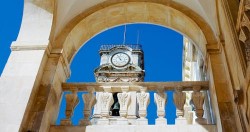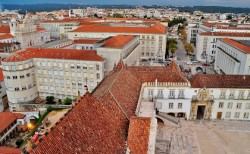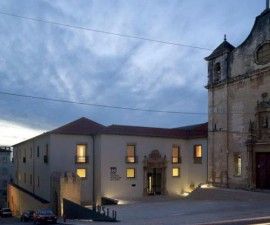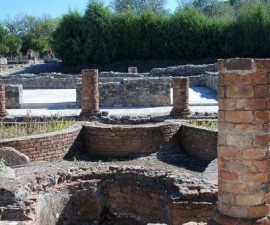Founded by King Dinis in 1290, Coimbra’s old university has the honour of being one of the oldest in Europe. It was originally founded in Lisbon before being transferred to Coimbra in 1537.
A number of university colleges were constructed during the course of the 16th century in an elevated position on a hill that slopes up out of the city, clustered around the 12th Century Cathedral of Santa Cruz.
The complex occupies a huge space within Coimbra and is a point of reference for locals and visitors alike. Renowned the world over both as a seat of learning and as a destination of architectural and historical significance, it is the focal point of many a sightseeing visit to this delightful city in north central Portugal.
Exploring the old university complex can take as long or as short a time as you wish. If you are in the city for just a day, do try to incorporate the university within your itinerary, and of course if you are in Coimbra for longer, it is a must-visit destination during your trip.
The university is entered via a 17th century iron gate, known as the Porta Ferrea, which opens up into a courtyard known as the scholars’ square, or the Paço das Escolas. The main buildings of the old university are located on the north side of the square, while the observatory is situated on the eastern flank and the university church to the west.
There are many sections of interest within the old university complex. The Biblioteca Joanina is one of the most fascinating. Built in the early 18th century at the instigation of King Joao V, it is a fine example of Baroque architecture and is the most famous library in Portugal. The museum houses over 250,000 books from the 12th to the 19th centuries, mostly dealing with law, theology and philosophy.
For those with an interest in military history, the Weapons Room, or Sala das Armas, is sure to be of great interest. Here in the royal wing of the Palace of Alcaçova is a display of weapons of the Royal Academic Guard. If you are lucky enough to visit during the time of a ceremonial occasion you will see them still in use today.
The Sala dos Capelos, or Grand Hall, was the original throne room of the Royal Palace. This is were most of the ceremonial activities take place, including the awarding of doctorates, the Rector’s investiture and the official opening of classes each year. Aside from its historical significance, the Sala dos Capelos is fascinating for its décor: paintings of the kings of Portugal; tiles from Lisbon; and a painted panelled ceiling dating back to 1655.
Other buildings of interest include the private exam room, where examinations were held up until the late 19th century, and St Michael’s Chapel, which is constructed in neoclassical style and adorned with some interesting Baroque and Mannerist touches.
Your visit to the old university in Coimbra will not be complete without seeing the Mediaeval and Academic Prison, where scholars and students convicted by the university’s own private court were detained.





